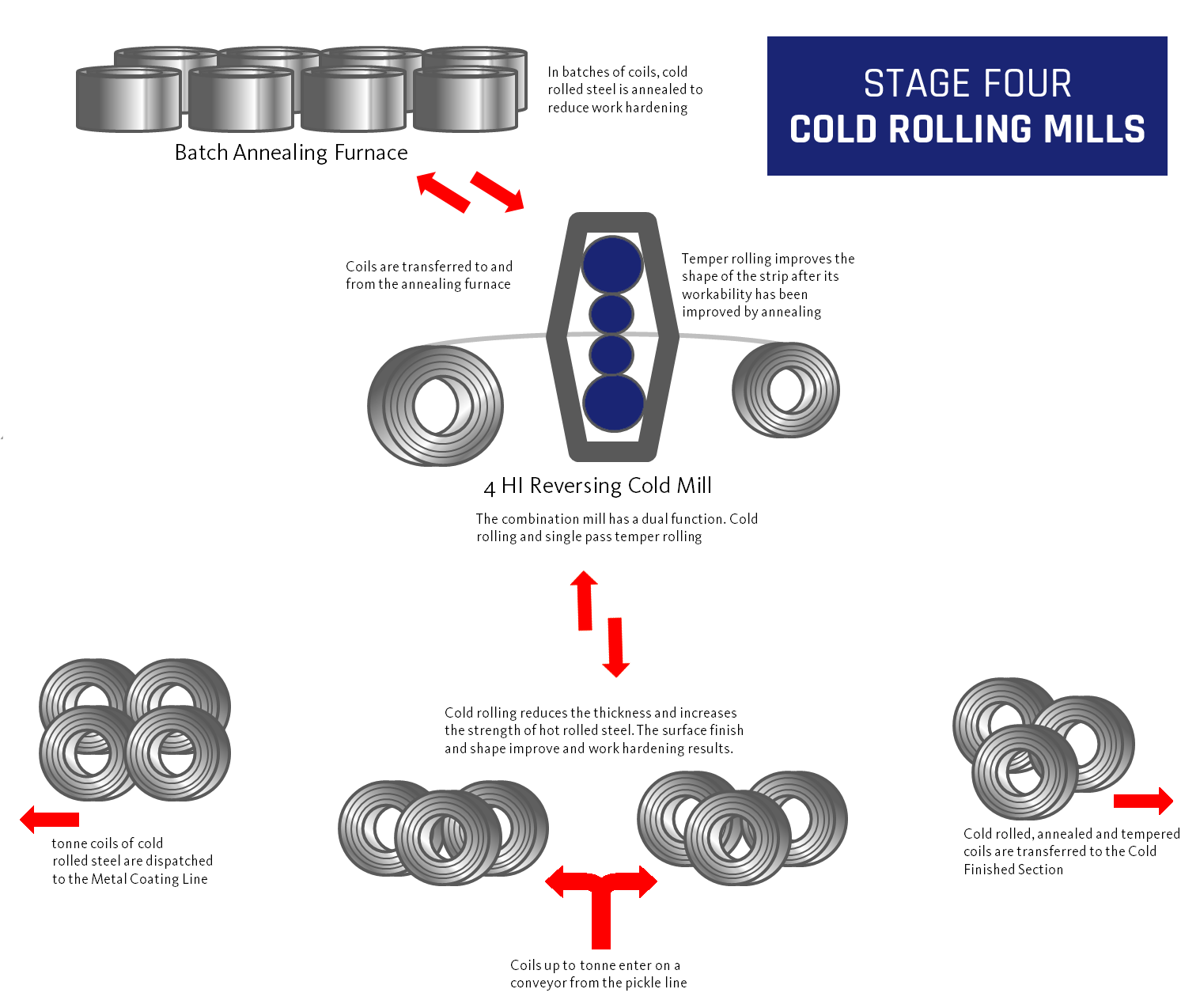Initial step in manufacturing Cold Rolled Steel involves cold reducing coils of hot-rolled coils, pickled product to thinner thicknesses. The cold reduction operation induces very high strains (work hardening) into the coil; thus, the coil not only becomes thinner, but also becomes much harder, less ductile, and very difficult to form. However, after the cold-reduced product is annealed (heated to high temperatures), it becomes very soft and formable. In fact, the combination of cold reduction and annealing lead to a refinement of the steel that provides very desirable and unique forming properties as per customer requirement.
The primary feature of cold reduction is to reduce the thickness of hot-rolled coils into thinner thicknesses that are not generally attainable in the hot rolled state. Controlling the coil thickness along the entire length of the coil is very important to ensure that the product will perform consistently during the processing by the end user. In addition, there are a number of other product attributes that need to be controlled in the cold reduction process. Flatness is one of the more important attributes. Surface finish is another product attribute that needs to be controlled during the cold-reduction process.
The production of a specific thickness of cold rolled sheet to meet an end user’s requirements involves very sophisticated processing from the melt stage forward. Steel chemistry, hot strip mill processing variables, pickling practices, cold-rolling mill practices, annealing practices, and finally, temper rolling practices all have a role in achieving the manufacture of top quality cold-rolled steel



